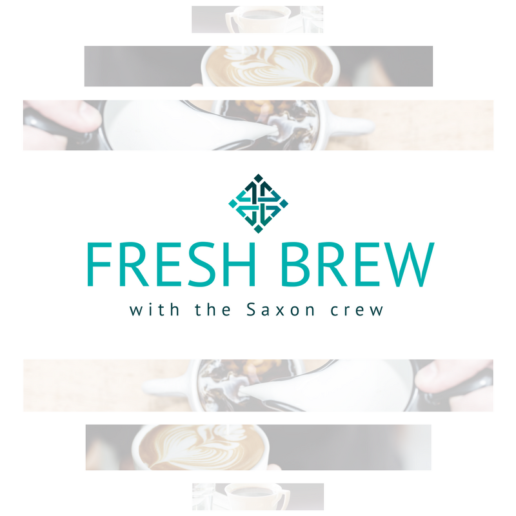U.S. Unemployment Drops to Lowest Rate in 50 Years
Last month the U.S. unemployment rate fell to 3.7 percent, the lowest it’s been in 50 years. Continue reading to learn how the low jobless rate is affecting the U.S. labor market.
Unemployment in the U.S. fell to 3.7 percent in September—the lowest since 1969, according to the Bureau of Labor Statistics (BLS).
The low jobless rate, down from 3.9 percent in August, is further evidence of a strong economy—employers added 134,000 new jobs in September, extending the longest continuous jobs expansion on record at 96 months. The continued gains run counter to economists' expectations for a significant slowdown in hiring as the labor market tightens. Through the first nine months of the year, employers added an average of 211,000 workers to payrolls each month, well outpacing 2017's average monthly growth of 182,000.
"This morning's jobs report marked a new milestone for the U.S. economy," said Andrew Chamberlain, chief economist at Glassdoor. "With good news in most economic indicators today, it's likely the economy will continue its march forward through the remainder of 2018."
Cathy Barrera, chief economist at online employment marketplace ZipRecruiter, pointed out that the jobless rate ticked down for all education levels. "Anecdotal evidence has suggested that employers have experienced labor shortages for entry-level positions, and the decline in unemployment for these groups reflects that," she said. "More of those joining or rejoining the labor force are moving directly into jobs, reflecting the high demand for workers."
The sectors showing the strongest jobs gains in September include:
- Professional and business services (54,000 new jobs).
- Healthcare (26,000).
- Transportation and warehousing (24,000).
- Construction (23,000).
- Manufacturing (18,000).
"Retail job losses—20,000 jobs—were widespread, and the leisure and hospitality sector lost 17,000 jobs, largely confined to restaurants," said Josh Wright, chief economist for recruitment software firm iCIMS, based in Holmdel, N.J.
"We can clearly point to a slowdown in retail trade for the dip in [overall] payroll numbers in September," said Martha Gimbel, research director for Indeed's Hiring Lab, the labor market research arm of the global job search engine. "Retail trade had a strong first half of the year but has slowed down in recent months. In addition, recent Hiring Lab research saw a slight dip in the number of holiday retail postings, suggesting that the sector may struggle in months to come."
Prior to September, employment in leisure and hospitality had been on a modest upward trend and the losses last month may reflect the impact of Hurricane Florence.
The Department of Labor said it's possible that employment in some industries was affected by Hurricane Florence which struck the Carolinas in September. Nearly 300,000 workers nationwide told the BLS that bad weather kept them away from their jobs last month.
"That's far below the level in September 2017 amid hurricanes Harvey and Irma, but significantly above the average of about 200,000 over the prior 13 years," Wright said. Upward revisions are likely, he added.
Wages Stubborn but Rising
In September, average hourly earnings for private-sector workers rose 8 cents to $27.24. Over the year, average hourly earnings have increased by 73 cents, or 2.8 percent.
"That's down slightly from the 2.9 percent pace last month, but consistent with a steady upward trend in wage growth we've seen as the job market tightens and more employers face labor shortages," Chamberlain said. "We expect to see that pace continue to rise throughout the holiday season, likely topping 3 percent within the next six months."
Glassdoor has recorded strong wage growth in tech-heavy metropolitan areas such as San Francisco, New York and Los Angeles.
"If the true wage growth rate is at or below 2.8 percent year-over-year, it is disappointing that it is not growing faster," Barrera said. "Given how tight the labor market has been not only with overall unemployment below 4 percent, but particularly so at the entry level, we would expect wage growth to be higher. The labor turnover numbers suggest that mobility is lower than it historically has been in periods where unemployment is very low. This is one reason wages may not be rising as quickly as we'd expect."
Labor Force Participation Stalled?
The nation's labor force participation rate held at 62.7 percent.
"Looking at the labor flows data, the rate of movement of the civilian population into the labor force hasn't moved much in the last couple of years, however, more of those folks are moving directly into employment rather than into unemployment," Barrera said.
Wright noted that the number of new labor force entrants and reentrants going directly to unemployment was just 33,000. "This raises interesting questions—whenever we get a recession, how long will these reentrants and new entrants continue searching for jobs before leaving the labor force?" he asked.
The percentage of the population in their prime working years with a job also held around 79 percent, where it's been for about eight months, Gimbel said, adding that the measure suggests that the number of workers remaining to pull into the labor force may be exhausted.
"The share of the labor force working part-time but who wants a full-time job unfortunately ticked up," she said. "Any remaining slack in the economy may be concentrated in part-time workers who want more hours."
SOURCE: Maurer, R. (5 October 2018) "U.S. Unemployment Drops to Lowest Rate in 50 Years" (Web Blog Post). Retrieved from https://www.shrm.org/resourcesandtools/hr-topics/talent-acquisition/pages/us-unemployment-drops-lowest-50-years-bls-jobs.aspx/
8 keys to developing a successful return to work program
What does your return to work program look like? Read this blog post for 8 tips to developing a successful return to work program at your organization.
No matter the size of your organization, there’s about a 99% chance at some point dealing with employees going on leave. Most HR professionals are well-versed on the logistics of what to do when an employee is on short- or long-term disability — but what sort of culture do you have in place that encourages and supports them with a return to work (RTW)? Developing a positive and open RTW culture benefits not only the organization but the employee and their teams as well.
An effective RTW program helps an injured or disabled employee maintain productivity while recuperating, protecting their earning power and boosting an organization’s output. There also are more intangible benefits including the mental health of the employee (helping them feel valued), and the perception by other team members that the organization values everyone’s work.
See also: 7 Ways Employers Can Support Older Workers And Job Seekers
Some other benefits of an RTW program can include improvement of short-term disability claims, improvement of compliance and reduction of employer costs (replacing a team member can cost anywhere from half to twice that employee’s salary, so doing everything you can to keep them is a wise investment).
Some of these may seem like common sense, but I’m continually surprised how many (even large) organizations don’t have an established RTW program. Here are eight critical elements of a successful program.
1. Support from company leadership.
2. Have a written policy and process.
3. Establish a return to work culture.
4. Train your team members.
5. Establish an RTW coordinator.
6. Create detailed job descriptions.
7. Create modified duty options.
8. Establish evaluation metrics.
Wanted: Female financial advisors to shrink industry gender gap
Recent studies show that just 16 percent of all financial advisors are women, creating a substantial gender gap. Do you want to close the gap?
If you want more female financial advisors, leverage the ones you already have.
That’s among the findings of the J.D. Power 2018 U.S. Financial Advisor Satisfaction Study, which says that despite the fact that women control 51 percent of assets, just 16 percent of all financial advisors are women.
That kind of a gender gap is nothing to be proud of, especially since it also finds that female financial advisors are generally more satisfied and loyal to their firm than their male counterparts.
That said, female advisors have “some unique pain points” that firms looking to better their position in the industry would be wise to correct.
“The wealth management industry clearly recognizes that aligning the gender mix of advisors with the shifting demographics of investors is critical for their success,” Mike Foy, director of the wealth management practice at J.D. Power, says in a statement. Foy adds, “But firms that want to be leaders in attracting and retaining top female talent need to differentiate on recognizing and addressing those areas that women’s perceptions and priorities may differ from men’s.”
The study, which measures satisfaction among both employee advisors and independent advisors, bases its evaluation on seven factors: client support; compensation; firm leadership; operational support; problem resolution; professional development; and technology support.
Considering that even though overall satisfaction with firms is improving, women are “more satisfied and loyal, bigger brand advocates.” The study finds that female advisors’ average overall satisfaction score is 786 among employee advisors—an impressive 59 points higher than among their male counterparts. Among independent advisors, overall satisfaction among women is also higher, at 793, topping their male counterparts by 39 points.
In addition, female advisors also are more likely than male advisors to say they “definitely will” remain at the same firm over the next 1–2 years (68 percent, compared with 56 percent) and are more likely to say they “definitely will” recommend their firm to others (60 percent, compared with 50 percent).
But as far as female advisors are concerned, their firms fall short in a number of areas. Women are significantly more likely than men, the report finds, to say they do not have an appropriate work/life balance (30 percent, compared with 22 percent). And 90 percent of women who do have that balance say they “definitely will” recommend their firm, while only 68 percent of those who do not will do so.
Women are also less likely than men to say they “completely” understand their compensation (60 percent, compared with 66 percent) and less likely to believe it reflects their job performance (60 percent, compared with 68 percent). They’re also less likely than men to believe mentoring programs are effective (44 percent, compared with 53 percent).
The mean tenure for female advisors at their current firms, the study reports, is 18 years, while the mean tenure for male advisors at their current firms is 20 years.
SOURCE:
Satter, M (13 July 2018) "Wanted: Female financial advisors to shrink industry gender gap" [Web Blog Post]. Retrieved from https://www.benefitspro.com/2018/07/12/wanted-female-financial-advisors-to-shrink-industr/
Fresh Brew With Tabitha McIntosh
Welcome to our brand new segment, Fresh Brew, where we will be exploring the delicious coffees, teas, and snacks of some of our employees! You can look forward to our Fresh Brew blog post on the first Friday of every month.
“Each client is different!”
Tabitha enjoys helping customers and prides herself on the understanding of their needs and the discovery of knowledge along the way. She especially enjoys following through with the customer and learning new things that will help her excel in her career and better service future clients.

Favorite Brew
Pumpkin Spice Latte
“I love grabbing this from either Starbucks or Royce Cafe in Lebanon!”
Favorite Snack
…Nothing!
“I like my coffee on it’s own. There are plenty of calories in each cup!”
Student loan benefits more popular with workers than employers
"While a student loan benefit is the most-requested financial benefit, it’s only third on the priority list for HR professionals." Find out more in this article.
If you ask them, 78 percent of employees laboring under a load of student debt will tell you that they want their bosses to provide a student loan benefit that will help them dig out.
Bosses, not so much. While a student loan benefit is the most-requested financial benefit, according to an HRDive report, it’s only third on the priority list for HR professionals.
Related: The problem with student-loan repayment benefits
It’s not just younger workers who want it, either. The 78 percent of employees who wish their jobs came with a student loan benefit includes 65 percent of workers over age 55 who have problems with current or future loan debt.
The report points to a CommonBond study that finds student loan benefits not only help to keep employees on the payroll and even better their job performance, but they also help in recruiting new talent. The study finds that 75 percent of all workers have paid for their own education via student loans, and 21 percent plan to take out student loans for a child or another family member in the next five years.
Oh, and another disconnect between boss and worker: while 75 percent of HR executives think their benefits offerings are innovative, only 50 percent of workers agree.
Money, of course, is a big worry for workers—and it’s not all about salary, with 44 million Americans weighed down by some $1.4 trillion in student debt. Worrying about lingering student loans also cuts productivity at work, in addition to subjecting workers to increasing stress, so it’s really an employer’s problem too.
Not only do students owe an average of more than $25,000 by graduation, figures from The Student Loan Report indicate that the loan default rate and delinquency rates are more than 10 percent and 5 percent, respectively—not exactly conducive to either peace of mind or high productivity at work. So employers are increasingly getting involved, considering tuition payment programs for employees who want to pursue a degree or add new skills.
And that can help both groups as employers become increasingly desperate for a more skilled employee base. It also helps employers as employee stress falls, potentially cutting health care costs as well and making workers more productive.
Source:
Satter M. (7 May 2018). "Student loan benefits more popular with workers than employers" [web blog post]. Retrieved from address https://bit.ly/2wi9yA0
Competing for talent in a Gen Z world
As 2018 progresses, HR managers are well advised to start stepping out of their comfort zones. Because Generation Z is beginning to surge into the workplace, forcing the reinvention of everything from benefits to recruiting. Your relevance in the war for talent may hang in the balance.
You’ve been hearing for some time now about the challenge of engaging a multi-generational workforce. But it’s time to think beyond the Millennials, and take a good look at the Gen Zs (born after 1995). They have a whole new set of expectations and values that are forcing employers to re-evaluate how they recruit, retain and, especially, engage their people. Start working on your battle plan in 2018 (and beyond) to avoid losing the talent battles.
They have decided views on how they expect to be treated and managed and how they respond if they don’t think their employer is measuring up. It’s a function of their upbringing in a hyper-connected world. According to Pew Research, only 14 percent of U.S. adults had Internet access in 1995, but that exploded to 87 percent by 2014. Small wonder that for the Zs, it’s the always-on and available tech-enabled connections to networks of people and information that rule. It’s how Zs learn and solve problems and it influences their expectations.
Here’s what it all means for your workplace and how you will need to compete for talent moving forward.
Legacy benefits and old attitudes need replacing now
The Zs aren’t merely connected. They share aggressively. Studies show that if their experiences – with a brand or a product or an employer – are negative, this generation will happily tell everybody about it online, including on Glass Door, a fast growing site that reviews millions of employers. That makes it important to foster a positive culture and work environment, and provide the types of benefits that will attract the Zs, keep them happy and ideally inspire them to spread the word.
To that end, take a long, hard look at your employee benefits: Too many employers still offer legacy employee packages that have changed little in the last two decades. Will they be good enough to woo the Zs and keep them satisfied? In fact, the Zs are motivated by the total deal, not just financial compensation. They want unique benefits that are personalized for them right down to the individual level.
Think about the 22-year-old who’s working in an urban setting, maybe with a pet at home, doesn’t have a lot of time to shop and is saddled with student loans. What are the priorities? A plan offering vision, life or disability insurance? Or a benefits package that provides a personal concierge and maybe dog walker, student loan repayment and an identity theft program, too? Best-of-class employers will offer up a robust mix of traditional and non-traditional benefits that cater to the individual employee’s lifestyle needs.
VR and gamification: Critical tools in winning Gen Z talent
Even as the Zs mature, there’s a trend toward a blending of personal and work lives as outside influences bleed into the workplace. When it comes to virtual reality, this generation of digital natives is enthusiastic over its potential use in the workplace.
There’s been a 250 percent jump in VR companies since 2012 and the technology’s significance is for more than just promoting productivity by connecting people in different locations for virtual meetings. It’s also a good recruiting tool, a way of letting prospective hires “experience” your environment so they are better able to tell before they take a job if it’s right for them.
Gamification is another Z activity that’s bleeding into business and affecting recruitment and hiring. Picture Silicon Valley’s “code-offs,” where prospective developers compete during a set time period to find the best solution to a specific design challenge. The winner gets the job. It certainly makes resume screening seem obsolete by comparison.
This incoming generation has a lot to offer employers who value the kind of fresh perspective it represents. The next big challenge will be reflecting that appreciation in creative approaches to winning and keeping their hearts and minds.
Read the article.
Source:
Barone M. (1 March 2018). "Competing for talent in a Gen Z world" [Web Blog Post]. Retrieved from address https://www.benefitspro.com/2018/03/01/surge-of-gen-z-workers-changing-how-employers-comp/
Spot the differences between productivity and busyness
Productivity and busyness are often used interchangeably. This is a mistake. When you think about it, you can be busy and still get nothing really done.
Productivity is efficiently using time to change something, whether it be improving a project or taking care of an errand. Efficiency is the key word here, as no one would consider, say, spending an entire day writing a letter efficient.
Busyness is being occupied with a particular activity to the point where it becomes a priority. Spending an entire day writing a letter is busyness, but it wouldn’t be considered productive. Yet, we can say “It was a busy day” and it could be, mistakenly, interpreted as productivity.
The difference matters because productivity requires strategy: What works best, what is most important now, what matters over other tasks and other standards. Busyness prioritizes going forward, whether or not it is the best thing to do right now.
Being productive rather than busy requires stopping, strategizing and consideration before taking action. To be truly productive, you must not be afraid of pausing – and pausing feels like the opposite of being busy. You must let go of the need to feel busy.
One other simple tell: Productivity tends to give energy, while busyness tends to take it away. Getting things accomplished creates momentum as well as confidence, while doing busy work often makes inertia and frustration since it usually doesn’t lead to progress.
Read the article.
Source:
Brown D. (21 February 2018). "Spot the differences between productivity and busyness" [Web Blog Post]. Retrieved from address https://workwell.unum.com/2018/02/spot-the-differences-between-productivity-and-busyness/
Boring Little Miracles
From SHRM, this article goes into the importance of "boring little miracles" in the workplace
The success of an organization is often borne on the backs of people performing boring little miracles.
Boring little miracles don’t make headlines. They, perhaps purposely so, fly under the radar, disguised as everyday tasks performed under pressure or work that doesn’t feel like much to the person performing it. People performing boring little miracles get the job done and then pack up and go home like it was no big deal.
But it IS a big deal.
Boring little miracles add up over time. They are the compounding interest of organizational productivity, and they are performed by people who invest early and often. These miracles sneak up on you and can quickly become the expectation rather than the exception.
Boring little miracles are still miracles.
They aren’t jobs or tasks that are easy, they just appear that way because of the person doing the work. Highly experienced and highly trained professionals doing what they do don’t have to sweat the work that other people dread. They just do it.
“Hey, she’s always been good at this stuff”," or “Well, he’s the only one who knows how to do it,” you might hear around the office. But you shouldn’t take it for granted.
Recognize and reward the behavior you want to see more of. Make space for the work that grabs headlines AND the work that doesn’t in your rewards and recognition structure. Pay special attention to the people who prefer to stay out of the spotlight; honor their work and contributions because it is important, not necessarily because it grabs attention.
Make recognition for this work specific. Make it count.
Do it well enough, and your team and organization might just become a boring little miracle itself.
Read the article.
Source:
Escobar C. (26 February 2018). "Boring Little Miracles" [Web Blog Post]. Retrieved from address https://blog.shrm.org/blog/boring-little-miracles
The decline of the employment drug test
Employers are struggling to hire workers in tightening U.S. job market. Marijuana is now legal in nine states and Washington, D.C., meaning more than one in five American adults can eat, drink, smoke or vape as they please. The result is the slow decline of pre-employment drug tests, which for decades had been a requirement for new recruits in industries ranging from manufacturing to finance.
As of the beginning of 2018, Excellence Health Inc., a Las Vegas-based health care company with around 6,000 employees, no longer drug tests people coming to work for the pharmaceutical side of the business. The company stopped testing for marijuana two years ago. “We don’t care what people do in their free time,” said Liam Meyer, a company spokesperson. “We want to help these people, instead of saying: ‘Hey, you can’t work for us because you used a substance,’” he added. The company also added a hotline for any workers who might be struggling with drug use.
Last month, AutoNation Inc., the largest U.S. auto dealer, announced it would no longer refuse job applicants who tested positive for weed. The Denver Post, owned by Digital First Media, ended pre-employment drug testing for all non-safety sensitive positions in September 2016.
So far, companies in states that have legalized either recreational or medicinal marijuana are leading the way on dropping drug tests. A survey last year by the Mountain States Employers Council of 609 Colorado employers found that the share of companies testing for marijuana use fell to 66 percent, down from 77 percent the year before.
Drug testing restricts the job pool, and in the current tight labor market, that’s having an impact on productivity and growth. In surveys done by the Federal Reserve last year, employers cited an inability by applicants to pass drug tests among reasons for difficulties in hiring. Failed tests reached an all-time high in 2017, according to data from Quest Diagnostics Inc. That’s likely to get worse as more people partake in state-legalized cannabis.
“The benefits of at least reconsidering the drug policy on behalf of an employer would be pretty high,” said Jeremy Kidd, a professor at Mercer Law School, who wrote a paper on the economics of workplace drug testing. “A blanket prohibition can’t possibly be the most economically efficient policy.”
Companies are having a hard enough time hiring, with unemployment hovering around 4 percent. “Employers are really strapped and saying ‘We’re going to forgive certain things,’” said James Reidy, a lawyer that works with employers on their human resources policies. Reidy knows of a half-dozen other large employers that have quietly changed their policies in recent years. Not all companies want to advertise the change, fearing it might imply they are soft on drugs. (Even former FBI director James Comey in 2014 half-joked about the need for the bureau to re-evaluate its drug-testing policy to attract the best candidates.)
Why the change? Pre-employment testing is no longer worth the expense in a society increasingly accepting of drug use. A Gallup poll in October found that 64 percent of Americans favor legalization. That’s the most since the company first started asking the question in 1969, when only 12 percent supported changing the plant’s status. Drug tests costs from $30 to $50 a pop, but the potential costs to an employer are far greater than the actual test.
In addition to helping ease the labor market, eliminating drug testing could have even broader benefits for the economy, said Kidd. Employers could hire the best, theoretically most-productive workers, he said, instead of rejecting people based on their recreational habits. Companies have said they lose out to foreign competitors because they can’t find people who can pass drugs tests, a particularly acute problem in the areas most affected by the opioid crisis.
Some jobs, such as those involving the use of heavy machinery, will always require drug tests. Excellence Health still drug-tests any employee working on a government contract, even in states where weed is legal. Companies are also reserving the right to test after an accident or if an employee comes to work notably impaired.
Not all companies are ready to change course. Restaurant Brands International Inc., which owns Burger King, hasn’t altered its corporate marijuana policy, said Chief Executive Officer Daniel Schwartz. Ford Motor Co. still treats pot as an illegal substance, according to a company spokeswoman.
Weed-averse employers have a notable ally: Attorney General Jeff Sessions. A longtime opponent of legalization, Sessions rescinded in January the Obama-era policies that enabled state-legalized cannabis industries to flourish. The uncertainty caused by the Justice Department’s actions may discourage companies from making changes.
Employers can also get discounts on workers’ compensation insurance for maintaining a “drug-free workplace” by, in part, drug-testing workers. But the types of workplaces forgoing pre-employment tests already enjoy relatively small savings. A job in an office setting, for example, won’t have very many workers’ compensation claims, compared to a factory. The money saved by meeting the qualifications for a drug-free zone isn’t worth it.
“We assume that a certain level of employees are going to be partaking on the weekends,” said Reidy, the employment lawyer. “We don’t care. We’re going to exclude a whole group of people, and we desperately need workers.”
Read the article.
Source:
Greenfield R, Kaplan J. (5 March 2018). "The decline of the employment drug test" [Web Blog Post]. Retrieved from address https://www.benefitspro.com/2018/03/05/the-decline-of-the-employment-drug-test/
3 simple ways to get motivated
Getting and staying motivated can be tough, whether you are coming back from vacation, dealing with something you’d rather avoid or getting focused on a Monday. Not every day will be super productive, and there is no sense in punishing yourself because of it, but there are three great ways to get back on track.
One way is to take the simplest task and make it even simpler. For example, if you have to write an email, then focus on doing the first sentence. Make writing the first sentence your goal. It may feel ridiculously easy, which is the point: Once you write that first sentence, then you will likely have the confidence to begin on the second sentence, and so on.
Another approach is to think about being in bed, tonight, right before you go to sleep. What did you accomplish today? Did you feel good about what got done? What do you wish you had gotten done so you wouldn’t be worried about doing it tomorrow? Now you can stop imagining: It’s wonderful that you still have the day ahead of you and you can get things done now.
Lastly, work on your next task for only five minutes. It will be a focused five minutes, which means no multitasking. Set an alarm as necessary. Chances are that the five minutes will go by quickly and, if you like, you can set the alarm for another five minutes.
Our motivation is usually hampered by either inertia, like when we have taken a break, or by timidity, like when we are intimidated by a major goal. By using these three methods, you can move towards success and focus on the next small step towards your big successful goal.
Read the article.
Source:
Brown D. (21 February 2018). "3 simple ways to get motivated" [Web Blog Post]. Retrieved from address https://workwell.unum.com/2018/02/3-simple-ways-to-get-motivated/













